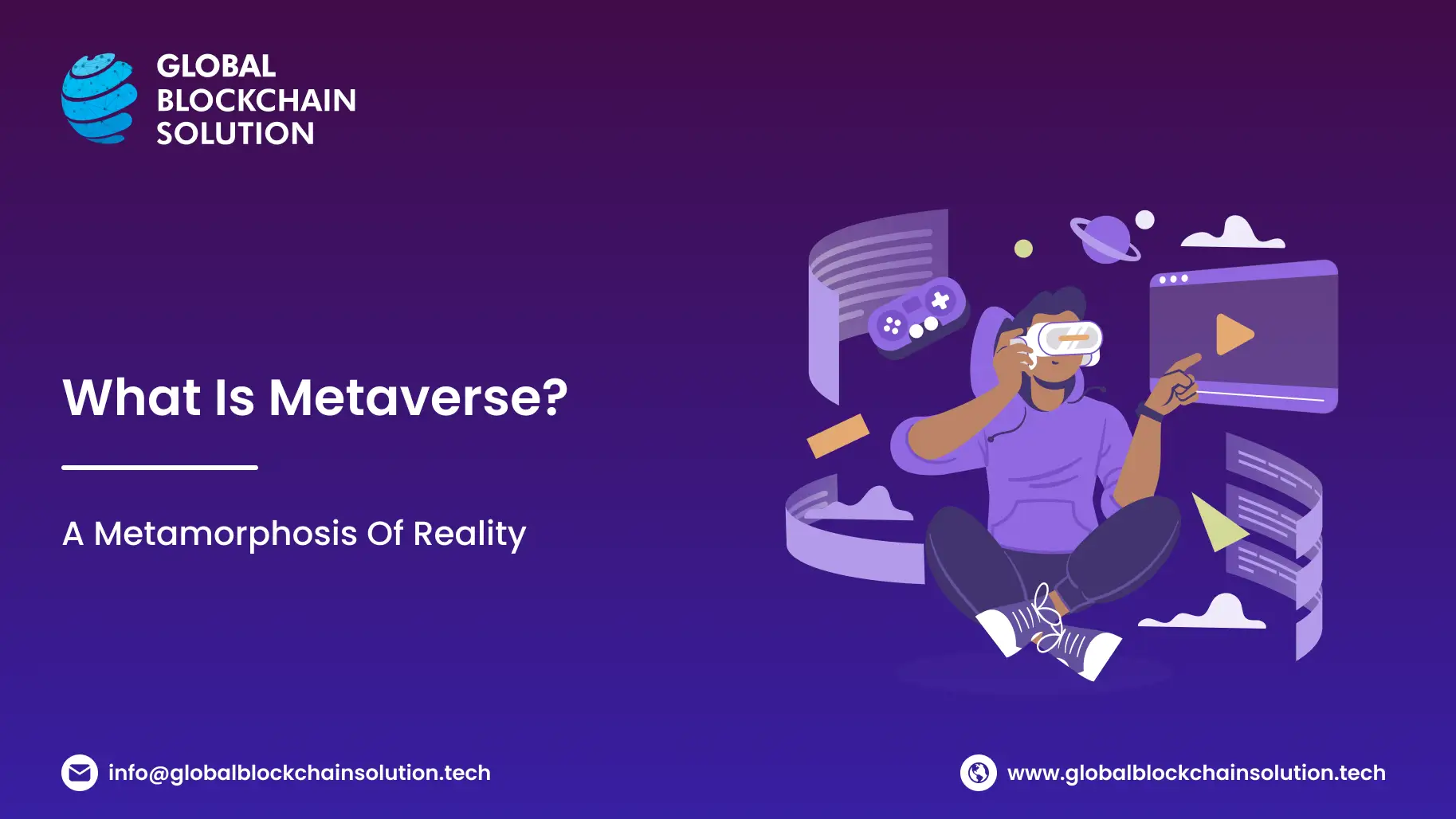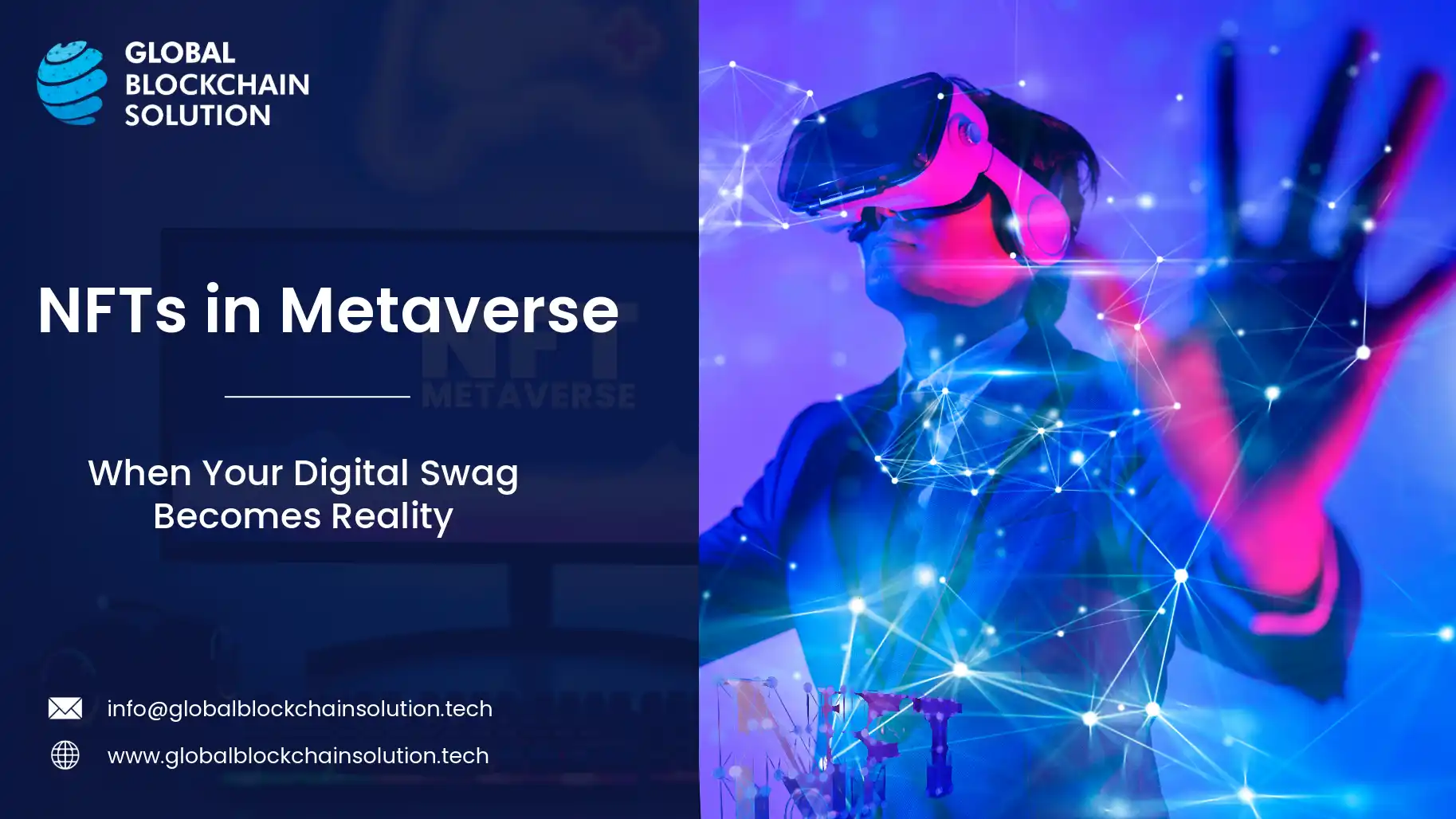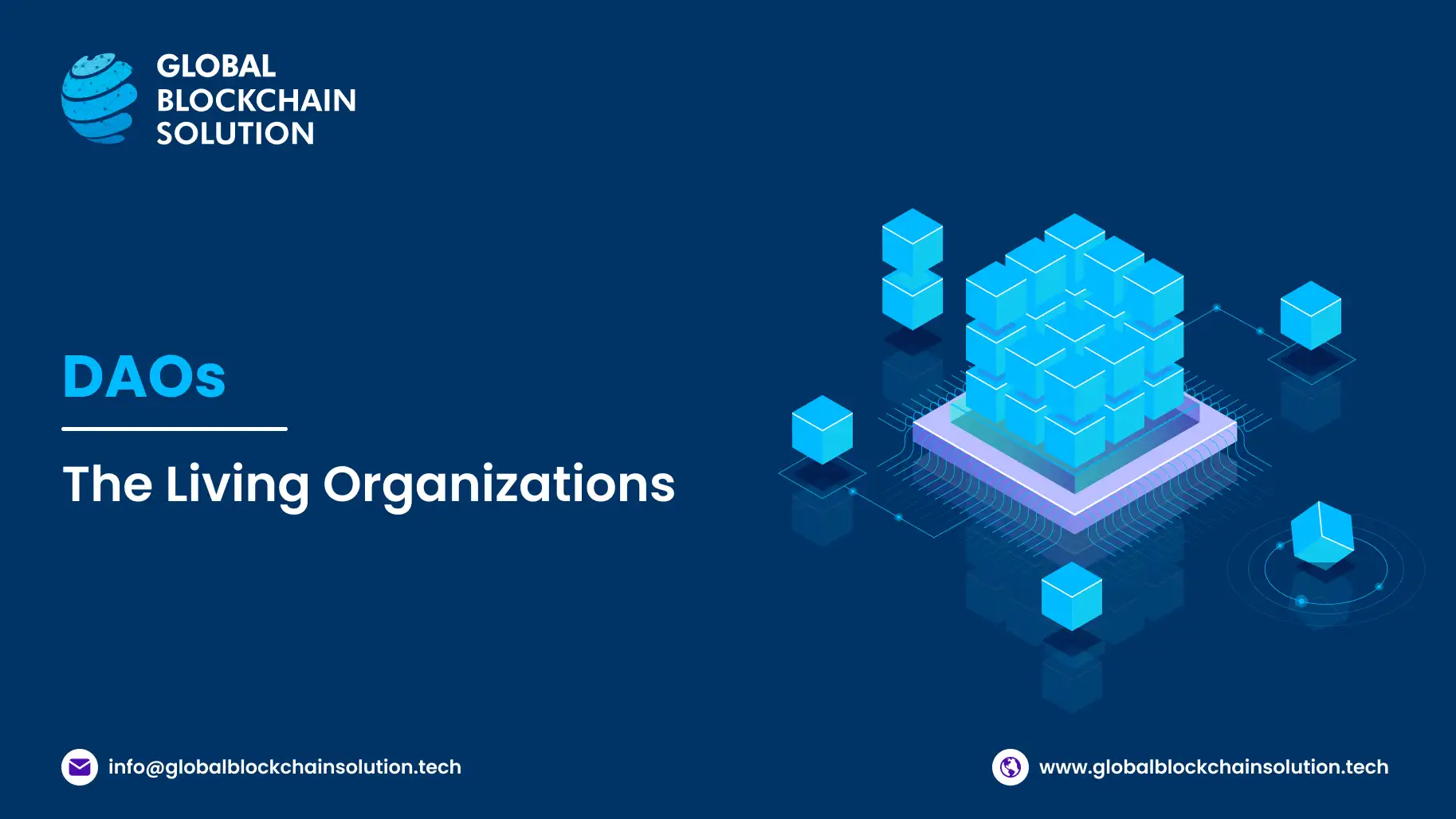In a sleek lab setting, Dr. Anna initiates nuclear fusion — a feat too dangerous. Jose, an inexperienced climber, sets on an expedition alone on Everest. Laila learns a new language to communicate with a street dog to know its life story. Welcome to the metaverse!

A virtual world where even nuclear experiments are safe and possible. Who says, "You live only once?" In the metaverse, one can live numerous lives, explore multiple virtual worlds, and use different digital avatars.
Metaverse is like a giant, interconnected online space offering endless opportunities for creativity, learning, and connection, all from the comfort of home.
Today, this Global Blockchain Solution blog will take us to the future in the making. So, don your virtual avatars as we zoom into this groundbreaking concept, where imagination is the only limit.
This Article Contains:
Why is Metaverse Technology Important for Businesses?
Metaverse offers new ways to connect with customers, create immersive experiences, and open up new revenue streams.
Businesses can use metaverse development to build virtual stores where customers can shop and emulate real-world experiences.
For example, a clothing brand could create a virtual fitting room where customers can try on clothes before buying. And, the customers can see themselves from all angles rather than a simple mirror image.
How will businesses benefit? They will reach more customers, offer unique shopping experiences, and boost customer satisfaction scores. Moreover, it will reduce the costs for physical stores. More importantly, it can significantly lower the return rate, which typically averages between 20% to 30% in e-commerce.
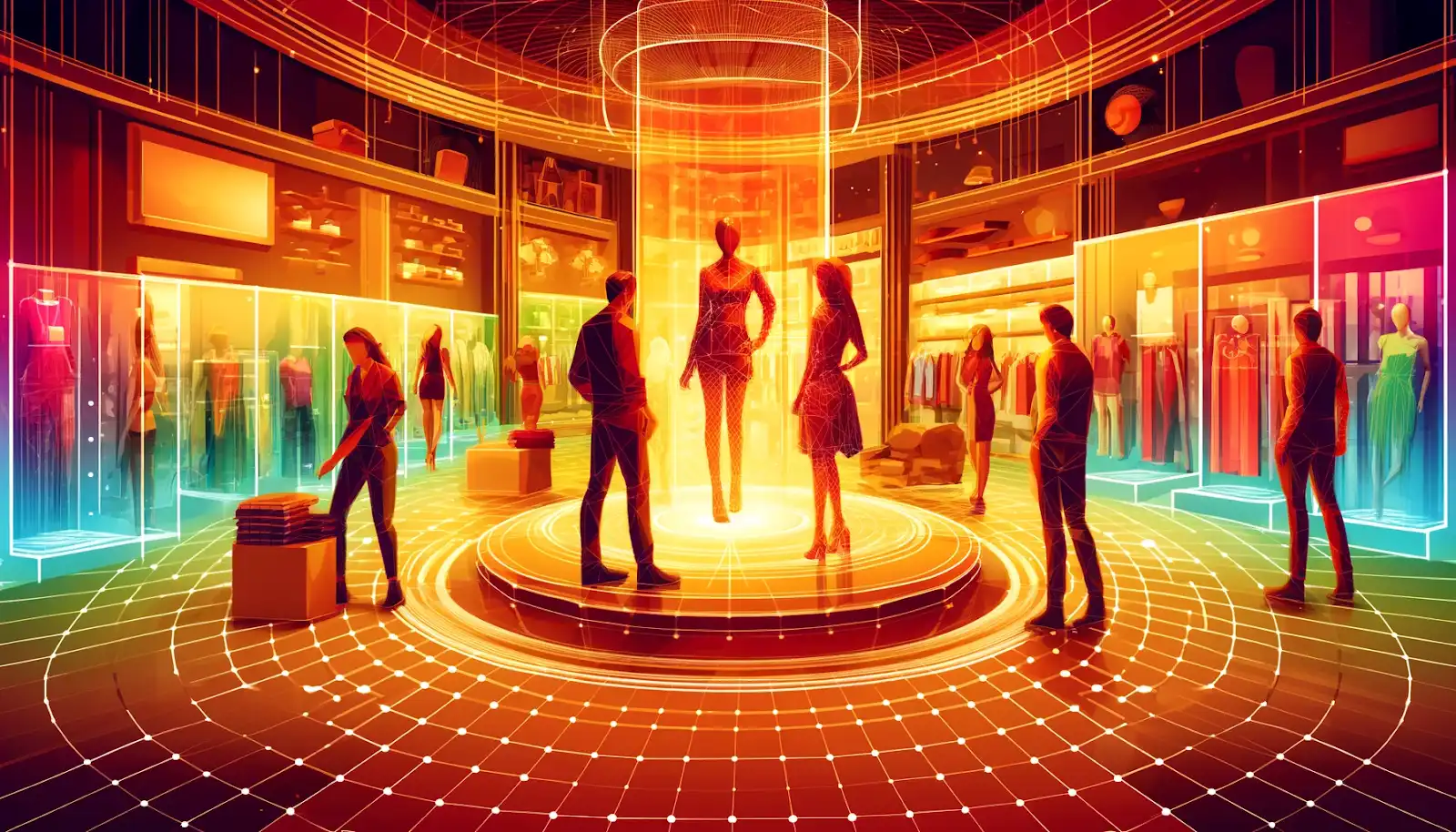
Companies can also host virtual events and meetings, making it easier to connect with people globally. Don't confuse it with your current online collaboration or remote working experience. This one will be at a different level altogether.
Virtual Reality (VR) headsets will allow companies to create digital spaces where people can attend, interact, and participate in real time.
Want to launch a new tech product? No problem. Instead of a physical event, the tech company can create a stunning virtual auditorium using the metaverse technology.
Attendees, represented by avatars, can log in from anywhere. They walk around the virtual venue, chat with other avatars, and watch the live product demo on a giant virtual screen.
If businesses today can achieve a 22% improvement in customer service with video-first interactions, imagine what this level of engagement can help you achieve.
There can be breakout rooms for discussions, interactive booths to explore features, and even a virtual lounge. This setup allows the company to reach a global audience, reduce event costs, and offer an immersive experience that feels almost like being there in person.
Also Read: CryptoKitties Case Study: Key lessons for blockchain development
How does the metaverse work?
The metaverse technology is still in its infancy. So, there is no fixed working model as of now.
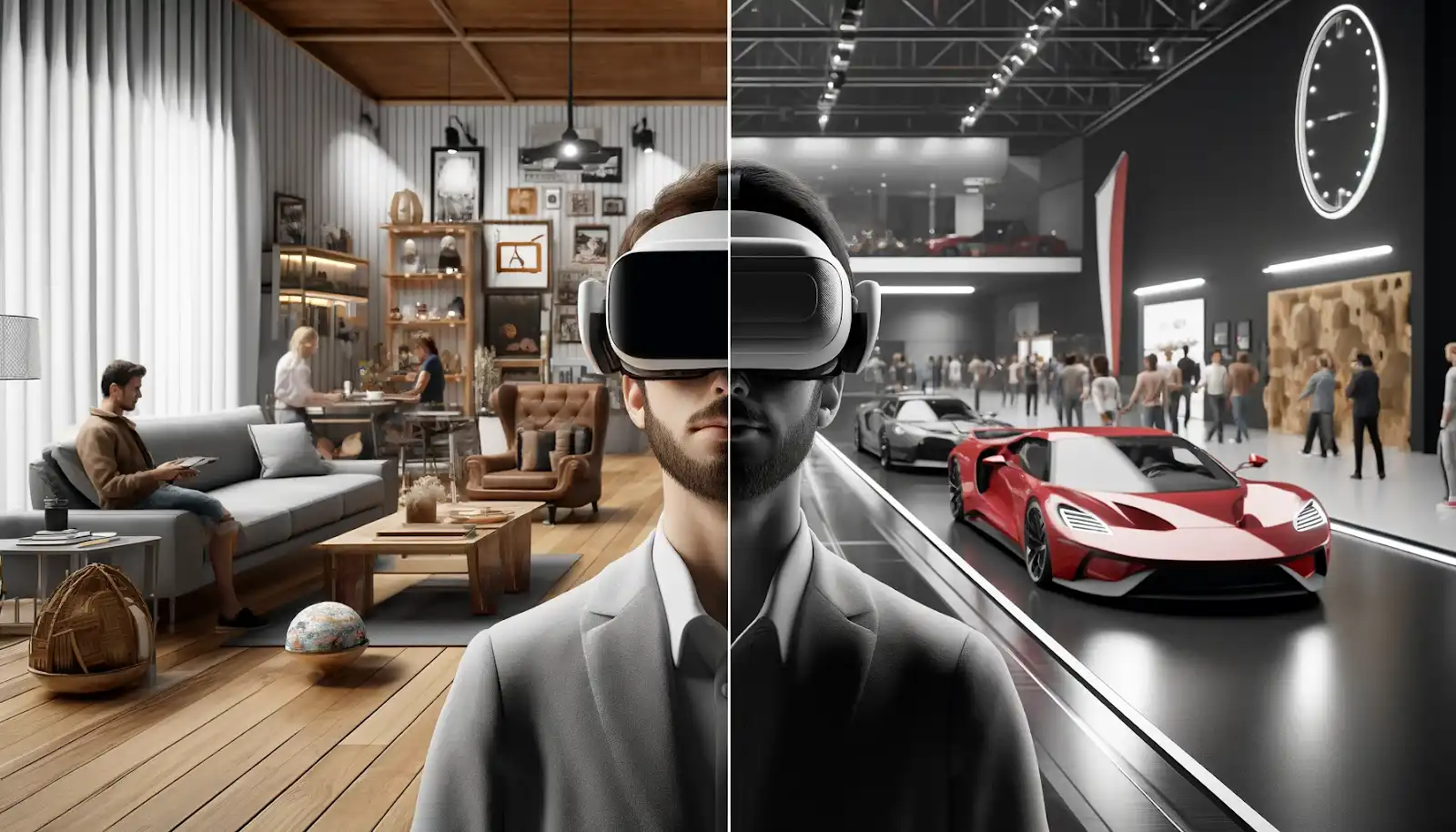
Yet, something that can be said with certainty is that the metaverse works by combining virtual reality (VR), augmented reality (AR), and the internet. It uses advanced computer graphics, 3D modeling, and real-time interactions to create immersive digital environments.
Also, infancy isn’t necessarily a bad thing. This makes it the right time to tap into these technologies, especially considering their near-term potential.
Elements of the Metaverse
Technically, the metaverse relies on several key technologies working together:
1. Virtual Reality (VR) and Augmented Reality (AR)
VR creates a fully immersive digital environment using VR headsets that cover the user's field of vision. AR overlays digital elements in the real world through devices like smartphones or AR glasses. If you’ve played Pokémon GO, that augmented reality.
2. 3D Modeling and Graphics
The metaverse uses detailed 3D models and high-quality graphics to create realistic virtual environments. These models are built using specialized software such as Blender or Maya, tokenized using blockchain via standards like ERC-721, and rendered in real time to respond to user interactions.
3. Networking and Connectivity
The metaverse is an online space, so it requires fast and reliable internet connections to ensure smooth interactions. Servers and data centers host the virtual worlds and manage the data exchange between users.
4. Blockchain Technology
Metaverse uses blockchain to secure transactions and ownership of virtual assets such as digital art or virtual real estate. This ensures transparency and security.
5. Artificial Intelligence (AI)
AI helps create realistic interactions within the metaverse. For example, AI-powered non-player characters (NPCs) can interact with users, providing a more engaging experience.
6. User Interfaces
Devices like VR headsets, AR glasses, and even traditional computers with high-resolution displays and motion sensors allow users to interact with the metaverse. Haptic feedback devices can add a tactile dimension to the experience.
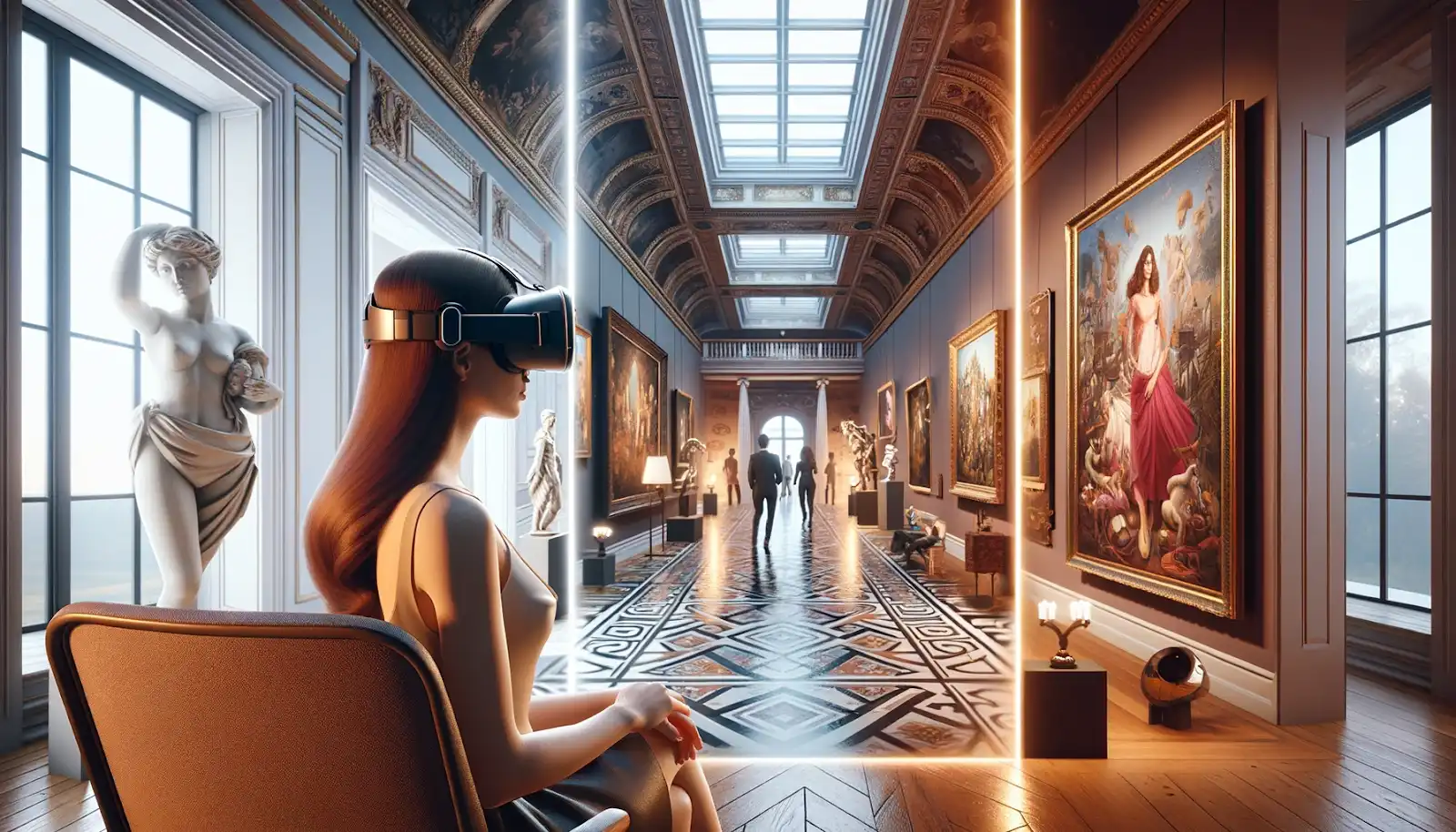
So, how do these elements blend the physical world with the digital world?
Also Read: Can I Tokenize a Real-World Asset?
Let's say you want to visit a virtual art gallery using the metaverse technology. You put on your VR headset, which tracks your head movements and displays a 3D environment that changes as you look around. The headset connects to a server hosting the gallery, downloading the 3D models of artworks and the virtual space.
As you move, sensors detect your motions, updating your position in real time within the virtual gallery. If you want to buy a digital painting, blockchain technology ensures your purchase is secure and verifies your ownership. AI-powered guides might offer information about the artwork, enhancing your virtual visit.
What is the Difference Between the Internet and the Metaverse?
The internet and the metaverse are distinct concepts, each with its unique characteristics, technologies, and applications.

The internet is a network of websites and information you access through a laptop or phone. The metaverse is a virtual world you can enter and interact with, like being inside a video game.
Here’s a detailed comparison of the two:
| Aspect | Internet | Metaverse |
|---|---|---|
| Definition and Scope | A global network of interconnected computers that communicate via standardized protocols (such as TCP/IP). It encompasses various services and resources, including websites, email, file sharing, and streaming media. Primarily used for information retrieval, communication, and commerce. | A collective virtual shared space. Convergence of virtually enhanced physical reality and physically persistent virtual space. It includes augmented reality (AR), virtual reality (VR), and other immersive digital experiences. Aims to provide a more immersive, interactive, and persistent virtual environment where users can interact with digital objects, environments, and other users. |
| Technology and Infrastructure | It relies on a network of servers, routers, and data centers that store and transmit data. Uses web browsers and applications to access various services. The underlying technology includes HTTP/HTTPS, DNS, and various protocols for email, file transfer, and other services. | Built on top of the internet, leveraging its infrastructure for connectivity. It requires advanced technologies such as VR/AR headsets, haptic feedback devices, spatial computing, and 3D graphics alongside data storage and transmission. Often, it involves complex real-time rendering, physics simulations, and AI-driven interactions. |
| User Interaction | Interaction is primarily 2D, involving screens, keyboards, and mice or touchscreens. Users navigate through web pages, apps, and digital content. | Interaction is typically 3D, using VR headsets, AR glasses, motion controllers, and sometimes haptic devices. Users can experience and manipulate digital environments in a more intuitive and immersive way, often represented by avatars. |
| Content and Experience | Content is mostly static or interactive in a non-immersive manner (e.g., videos, text, images, interactive websites). Experiences are primarily passive (reading, watching) or lightly interactive (clicking, typing). | Content is highly immersive and interactive, often involving 3D environments and real-time user interactions. Experiences are designed to be engaging and lifelike, such as virtual meetings, gaming, virtual tourism, and social interactions. |
| Applications and Use Cases | Used for a wide range of purposes including research, education, communication, entertainment, and e-commerce. Examples: Google, Wikipedia, Amazon, Netflix, and social media platforms. | Envisioned to enhance or revolutionize areas such as gaming, virtual workspaces, education, social networking, and retail. Examples: VR gaming platforms (like Oculus), virtual meeting spaces (like Meta’s Horizon Workrooms), and virtual worlds (like Second Life). |
| Persistence and Continuity | Websites and services are persistent but individual user sessions are often temporary. Users log in and out of services, and their interactions may not have a lasting presence unless saved (e.g., emails, documents). | Designed to be persistent, where changes and interactions can have a lasting impact on the virtual setting. Users can create, modify, and experience content that remains accessible after logging out. |
| Economic and Social Aspects | It has revolutionized commerce through e-commerce, digital advertising, and online services. Social interaction is facilitated through social media, forums, and communication tools. | There’s potential to create new economic models such as virtual real estate, digital goods and services, and virtual marketplaces. Aims to offer deeper social connections through shared experiences in virtual spaces, potentially creating new forms of community and interaction. |
While the internet serves as the foundational infrastructure for digital communication and information exchange, the metaverse represents the next step in creating immersive, interactive digital experiences. The metaverse technology builds upon the internet's capabilities, enhancing how users interact with digital environments and each other, aiming for a more integrated and persistent virtual world.
How is Metaverse Different from VR? How Do They Relate to Each Other?
Typically, Virtual Reality (VR) technology gives you a simulated experience. Such experiences are transferred to you via different tools and sensors, such as VR headsets, haptic VR devices (like haptic suits, gloves, etc.), omnidirectional treadmills, and so on. It gives you unique and immersive experiences.
So, while VR technology is about creating isolated and simulated experiences, metaverse technology is about creating a vast, interconnected virtual universe.
In other words, VR can be treated like a roller coaster, a water ride, or any other immersive activity in a theme park. Metaverse, conversely, would become the entire theme park that houses these rides.
Yes, you get it right! Metaverse is a collective virtual shared space that combines augmented reality, virtual reality, and digital environments for a persistent and immersive digital universe.
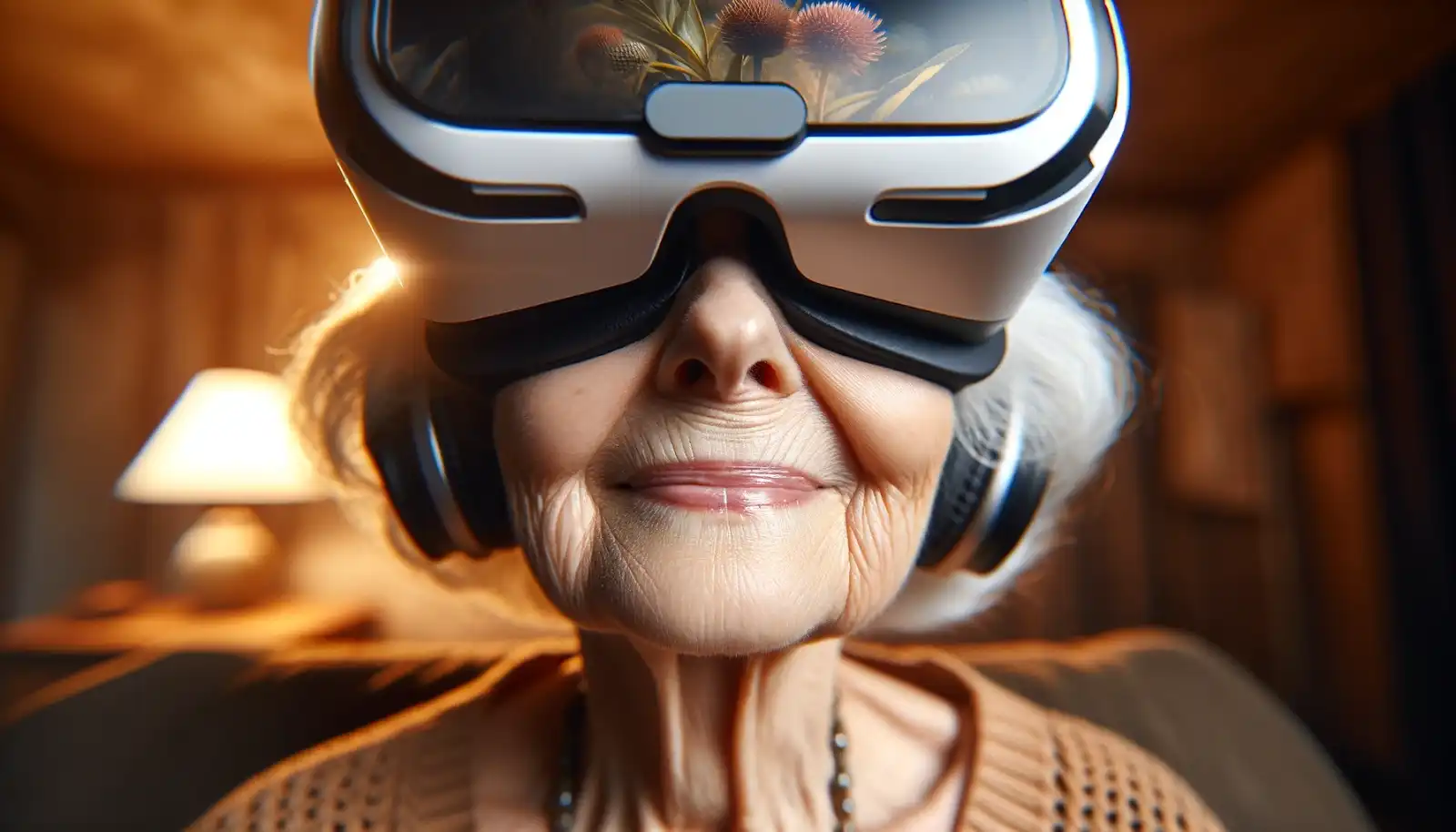
VR and the metaverse are interdependent. VR enables the immersive and interactive experiences that define the metaverse, while the metaverse provides a platform for VR's widespread use and development, shaping the future of digital interaction and virtual experiences.
What is the Role of Blockchain in the Metaverse?
Blockchain technology plays a critical role in the development and functioning of the metaverse by providing a decentralized, secure, and transparent infrastructure. Here are several key ways in which blockchain contributes to the metaverse:
1. Decentralization and Ownership
Blockchain enables the decentralization of virtual assets and digital properties in the metaverse. This means that users can truly own their digital assets, such as virtual land, avatars, and items, without reliance on a central authority or platform.
Also Read: What Is a Decentralized Autonomous Organization (DAO)?
2. Digital Assets and NFTs
Non-fungible tokens (NFTs) are unique digital assets stored on the blockchain. They represent ownership of a specific item or content, providing verifiable scarcity and provenance.

In the metaverse, NFTs can represent anything from virtual real estate and digital art to virtual goods and collectibles. Platforms like The Sandbox and Cryptovoxels use NFTs to allow users to buy, sell, and trade virtual land and assets.
Also Read: Top NFTs: 10 Most Expensive NFTs & What Makes Them Special?
3. Interoperability
Blockchain facilitates the interoperability of assets and identities across different virtual worlds and platforms within the metaverse. This allows users to transfer their digital assets for greater utility and maintain their identity across multiple environments.
4. Security and Trust
Blockchain’s immutable ledger ensures that all transactions and ownership records are secure, transparent, and tamper-proof. This builds trust among users, knowing that their digital assets and transactions are safe from fraud and manipulation.
For instance, smart contracts on platforms like Ethereum automate and enforce agreements without the need for intermediaries, ensuring secure and transparent transactions using the metaverse technology.
5. Virtual Economies
Blockchain enables the creation of decentralized virtual economies where users can earn, spend, and trade cryptocurrencies and digital assets. These economies are governed by decentralized protocols, allowing for community-driven growth and sustainability.
Games like Axie Infinity have developed their unique economies using blockchain, where players earn tokens (such as AXS) that can be used in the game or traded on cryptocurrency exchanges.
6. Identity and Authentication
Blockchain can provide users with a decentralized digital identity that they control, enhancing privacy and security. This identity can be used across different platforms within the metaverse.

Projects like Sovrin are developing decentralized identity solutions that allow users to create and manage their digital identities using Decentralized Autonomous Organizations.
7. Governance
Decentralized Autonomous Organizations (DAOs) are digital organizations governed by smart contracts on the blockchain, where decisions are made collectively by token holders. DAOs can be used to manage virtual worlds and communities within the metaverse, giving users a say in how these environments are run.
Blockchain technology is foundational to the metaverse, providing the infrastructure for decentralized ownership, security, interoperability, and governance. By leveraging blockchain, the metaverse can offer users a more open, secure, and equitable digital environment where they have greater control over their assets and identities.
As the metaverse continues to evolve, blockchain will likely play an increasingly integral role in its development and operation. If you have any queries or if there’s a metaverse project on your mind, feel free to contact us. Get a free 15-minute consultation to resolve all your doubts and quandaries.
FAQs
1. What exactly is the Metaverse?
The Metaverse is a collective virtual shared space, created by the convergence of virtually enhanced physical reality and physically persistent virtual spaces. It encompasses virtual reality (VR), augmented reality (AR), and various other digital experiences where users can interact with a computer-generated environment and other users.
Popularized by science fiction, the concept has been embraced by tech giants like Facebook (now Meta), which envisions the Metaverse as the next big evolution of the internet, enabling immersive social experiences, commerce, education, and entertainment.
2. Which technology companies are working towards the metaverse?
All major tech companies like Google, Apple, Microsoft, Meta (née Facebook), Niantic, and others are investing in the metaverse.
3. How can one access the Metaverse?
Accessing the Metaverse typically requires a combination of hardware and software. For the most immersive experiences, users can use VR headsets like the Oculus Quest, HTC Vive, or PlayStation VR, which allow them to enter virtual environments.
Augmented reality experiences, which overlay digital content in the real world, can be accessed using AR glasses like the Apple Vision Pro, Microsoft HoloLens, or even smartphones with apps like Pokémon GO. Additionally, many Metaverse platforms, such as Roblox, Fortnite, and Decentraland, can be accessed via regular PCs or gaming consoles.
4. What can you do in the Metaverse?
The Metaverse offers a wide range of activities, making it a versatile digital landscape. Users can socialize with friends in virtual hangouts, attend virtual concerts, explore digital art galleries, and participate in immersive gaming experiences.
Educational opportunities are also expanding, with virtual classrooms and training simulations becoming more common. In the business realm, companies are holding virtual meetings and conferences, while digital real estate markets allow users to buy, sell, and develop virtual properties.
The possibilities are continually expanding as technology and creativity evolve.

